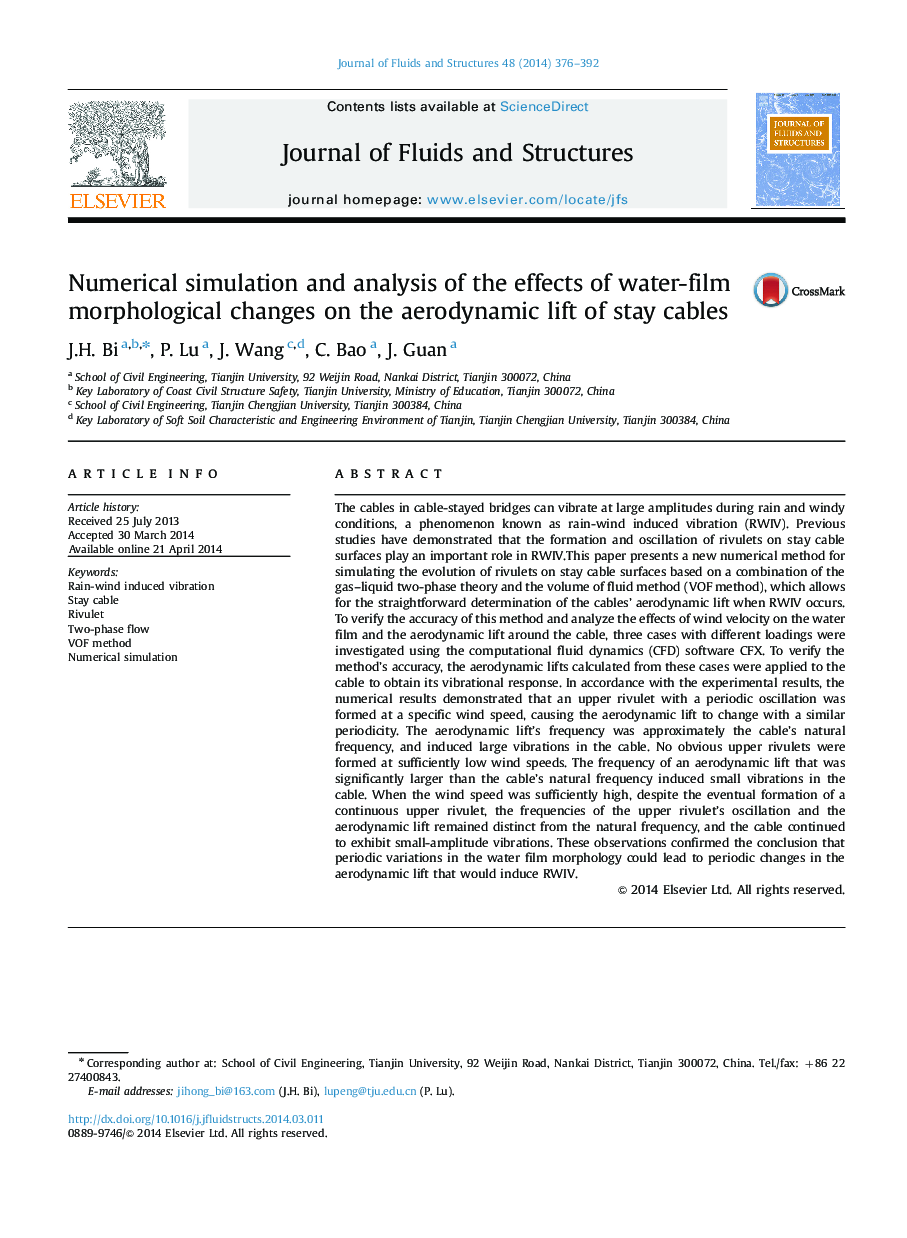| Article ID | Journal | Published Year | Pages | File Type |
|---|---|---|---|---|
| 793644 | Journal of Fluids and Structures | 2014 | 17 Pages |
The cables in cable-stayed bridges can vibrate at large amplitudes during rain and windy conditions, a phenomenon known as rain-wind induced vibration (RWIV). Previous studies have demonstrated that the formation and oscillation of rivulets on stay cable surfaces play an important role in RWIV.This paper presents a new numerical method for simulating the evolution of rivulets on stay cable surfaces based on a combination of the gas–liquid two-phase theory and the volume of fluid method (VOF method), which allows for the straightforward determination of the cables’ aerodynamic lift when RWIV occurs. To verify the accuracy of this method and analyze the effects of wind velocity on the water film and the aerodynamic lift around the cable, three cases with different loadings were investigated using the computational fluid dynamics (CFD) software CFX. To verify the method’s accuracy, the aerodynamic lifts calculated from these cases were applied to the cable to obtain its vibrational response. In accordance with the experimental results, the numerical results demonstrated that an upper rivulet with a periodic oscillation was formed at a specific wind speed, causing the aerodynamic lift to change with a similar periodicity. The aerodynamic lift’s frequency was approximately the cable’s natural frequency, and induced large vibrations in the cable. No obvious upper rivulets were formed at sufficiently low wind speeds. The frequency of an aerodynamic lift that was significantly larger than the cable’s natural frequency induced small vibrations in the cable. When the wind speed was sufficiently high, despite the eventual formation of a continuous upper rivulet, the frequencies of the upper rivulet’s oscillation and the aerodynamic lift remained distinct from the natural frequency, and the cable continued to exhibit small-amplitude vibrations. These observations confirmed the conclusion that periodic variations in the water film morphology could lead to periodic changes in the aerodynamic lift that would induce RWIV.
